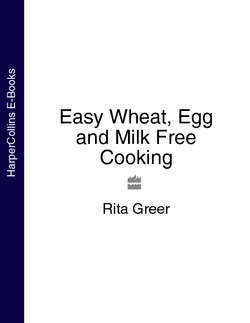Читать книгу Easy Wheat, Egg and Milk Free Cooking - Rita Greer - Страница 10
Milk
ОглавлениеMilk features in our diet in many forms – butter, cream, cheese and yogurt, or as a drink in various ways. In the Western world, dairy farming is an extremely important industry and milk is plentiful and cheap. It is not unusual for adults to drink at least ½ litre (1 pint) per day and children more.
Milk is added to products to enrich them. Components of milk can also be used in manufacturing. Lactose (milk sugar) is widely used as a filler in the manufacture of pharmaceuticals. Caseinate (milk protein) is valuable as an enricher and is used to increase the nutritional value of slimming products and cheeses. Whey is used in the manufacture of margarines usually to make them creamy.
If you see any of the following items listed as an ingredient in a food it will not be milk-free:
Albumin
Calcium *
Casein *
Curds
Iron *
Lactic acid
Lactose (milk sugar)
Magnesium *
Milk
Milk protein
Milk solids
Potassium *
Sodium *
Whey
Zinc*
* caseinates
The following products should not be used in milk-free cooking unless you are sure they do not contain milk:
Bakery foods, such as cakes, buns, pastries and biscuits
Baking powder
Batter mixes
Butter and cream sauces
Butter/butter-like spreads
Cake mixes
Cake toppings
Cheeses (all kinds)
Chocolate
Chocolate, cocoa and other milk-based drinks
Condensed milk
Cream
Creamed foods
Custard (ready-made)
Dried milk
Evaporated milk
Ice cream
Instant desserts
Instant pudding mixes
Junket
Margarine
Mashed potato
Pancake and waffle mixes
Pastry
Salad dressings
Scrambled eggs
Skimmed milk
Slimming foods
Soups
Spreads
Sweets
Whole milk
Yogurt
Yorkshire pudding
